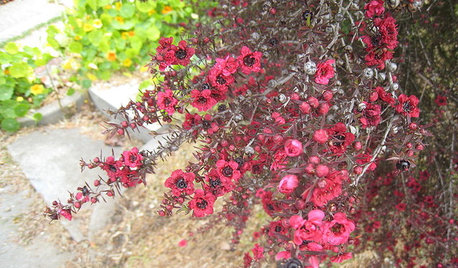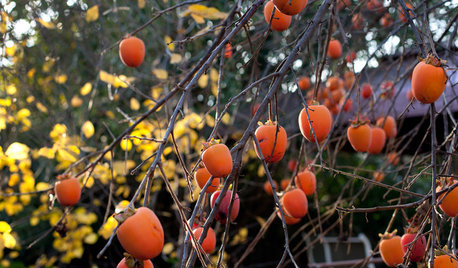Apple Tree spraying/maintenance
countrylife
17 years ago
Related Stories

EDIBLE GARDENSHow to Add an Apple Tree to Your Edible Garden
Readily available, beautiful and fragrant, apple trees offer four-season interest along with crisp, juicy fruit
Full Story
GARDENING AND LANDSCAPINGCrab Apple Trees Set Off a Stylish English Courtyard
A structure of pleached crab apple trees, bordered by a wildflower meadow, links a minimalist addition to an old house in Buckinghamshire
Full Story
MONTHLY HOME CHECKLISTSYour Fall Home Maintenance Checklist
Prep your house and yard for cold weather with this list of things to do in an hour or over a weekend
Full Story
LANDSCAPE DESIGN7 Low-Maintenance Lawn Alternatives
Turf isn't the only ground cover in town. Get a lush no-grass lawn with clover, moss and other easy-care plants
Full Story
MATERIALSDesign Workshop: Natural Wood Siding Minus the Maintenance
No need to worry about upkeep when you choose wood that embraces weathering
Full Story
GARDENING GUIDESGreat Design Plant: New Zealand Tea Tree
Balance pretty polish and ruggedness in a temperate garden with this low-maintenance and drought-tolerant flowering shrub
Full Story
EDIBLE GARDENSHow to Grow 10 Favorite Fruit Trees at Home
Plant a mini orchard in fall, winter or early spring to enjoy fresh-off-the-tree fruit the following year
Full Story
GARDENING GUIDES10 Top California Native Plants, Trees and Grasses
Enjoy a fuss-free, water-wise garden in the Golden State by growing plants naturally in tune with the climate and wildlife
Full Story
EDIBLE GARDENSGreat Design Plant: Persimmon
Combining beautiful fruit, vivid fall leaves and low maintenance, this tree is a winner in the garden
Full Story
ARBOR DAY8 Reasons to Plant a Great Tree
Beauty is its own reward, but the benefits of planting the right tree in the right place go way beyond looks
Full Story






countrylifeOriginal Author
jellyman
Related Professionals
Ballenger Creek Landscape Architects & Landscape Designers · Ferndale Landscape Architects & Landscape Designers · Fort Lee Landscape Architects & Landscape Designers · Middle Island Landscape Architects & Landscape Designers · Wakefield Landscape Contractors · Battle Ground Landscape Contractors · Berwyn Landscape Contractors · Choctaw Landscape Contractors · Dinuba Landscape Contractors · Inglewood Landscape Contractors · Las Vegas Landscape Contractors · Norristown Landscape Contractors · Panama City Beach Landscape Contractors · Pleasant Prairie Landscape Contractors · Ansonia Landscape Contractorsediej1209 AL Zn 7
marknmt
jellyman
wayne_5 zone 6a Central Indiana
jellyman
lindas56
seattletreefruitsociety_hotmail_com
alan haigh